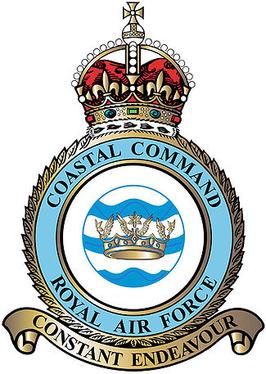
RAF Coastal Command was a formation within the Royal Air Force (RAF). It was founded in 1936, when the RAF was restructured into Fighter, Bomber and Coastal commands and played an important role during the Second World War. Maritime Aviation had been neglected in the inter-war period, due to disagreements between the Royal Navy (RN) and RAF over the ownership, roles and investment in maritime air power.

The Naval Intelligence Division (NID) was created as a component part of the Admiralty War Staff in 1912. It was the intelligence arm of the British Admiralty before the establishment of a unified Defence Intelligence Staff in 1964. It dealt with matters concerning British naval plans, with the collection of naval intelligence. It was also known as "Room 39", after its room number at the Admiralty.
The admiral-superintendent was the Royal Navy officer in command of a larger Naval Dockyard. Portsmouth, Devonport and Chatham all had admiral-superintendents, as did some other dockyards in the United Kingdom and abroad at certain times. The admiral-superintendent usually held the rank of rear-admiral. His deputy was the captain of the dockyard.

Vice Admiral Sir Peter William Gretton was an officer in the Royal Navy. He was active in the Battle of the Atlantic during the Second World War, and was a successful convoy escort commander. He eventually rose to become Fifth Sea Lord and retired as a vice admiral before entering university life as a bursar and academic.
Rear-Admiral Loben Edward Harold Maund was a rear admiral of the British Royal Navy, who served in World War I and World War II. He was the captain of the aircraft carrier Ark Royal when she was sunk in November 1941, but went on to serve in Combined Operations, playing an important role in the development of landing craft.

The Assistant Chief of the Naval Staff (A.C.N.S.) is a senior appointment in the Royal Navy usually a two-star rank and has a NATO ranking code of OF-7.
The Commander in Chief, Dover was an operational commander of the Royal Navy. His subordinate units, establishments, and staff were sometimes informally known as the Dover Command.

The Deputy Chief of the Naval Staff (DCNS) is a senior appointment in the Royal Navy currently held by the Second Sea Lord. The incumbent is usually a three-star rank and had a NATO ranking code of OF-8, but the position has previously been held by an acting two-star ranked officer and a four-star ranked officer.

The Admiralty Naval Staff was the former senior command, operational planning, policy and strategy department within the British Admiralty. It was established in 1917 and existed until 1964 when the department of the Admiralty was abolished. It was replaced by the Ministry of Defence as part of the Ministry of Defence Navy Department.

The Operations Division was a former directorate of the Admiralty Naval Staff responsible for the creation and implementation of long-term policy in regards to the composition of all Royal Navy fleets, squadrons and commands and including operational planning and monitoring from 1912 to 1961.

The Anti-Submarine Division its original name, was the former anti-submarine warfare, planning and prevention directorate of the Admiralty Department from 1912 to 1963.

The Plans Division was the former war preparation and wartime strategic planning arm of the Admiralty Department from 1917 to 1964, The division originally became the main policy advisory and formulating body to the Chief of the Naval Staff. It later came under the supervision of the Assistant-Chief of the Naval staff (Policy).

The Mercantile Movements Division originally known as the Convoy Section was a former Directorate of the British Admiralty, Naval Staff that coordinated, organised and plotted all Merchant Navy convoys, routing and schedules from 1917 until 1920.

The Trade Division was a Directorate of the British Admiralty, Naval Staff responsible for all matters in relation to U.K. Trade Defence from 1914 until 1928 and then again from 1939 to 1961.

The Assistant Chief of the Naval Staff (U boat and Trade) was a senior British Royal Navy appointment. The post holder was part of the Admiralty Naval Staff and member of the Board of Admiralty from 1940 to 1945.

During the First World War, the Commander-in-Chief at the Cape, Rear Admiral Herbert King-Hall, expended much effort to destroy the elusive German light cruiser Königsberg.

The Naval Air Organisation and Training Division was a staff division of the Admiralty Naval Staff established in July 1944 It continued to operate until 1961 when it was deactivated. The staff division was administered by the Director Air Organisation and Training who reported both to the Assistant Chief of the Naval Staff and the Fifth Sea Lord as Chief of Naval Aviation.

The Minesweeping Division was a staff division of the Admiralty Naval Staff first established during World War I (1917-1918) the deactivated. It was re-activated during World War II (1939-1943) before being abolished. It was administered by the Director of Minesweeping Division

The Press Division was a staff division of the Admiralty Naval Staff established during World War II (1940-1942) before being abolished. The staff division was administered by the Director of Press Division

The Directorate Naval Tactical and Weapons Policy originally called the Tactical Section was a directorate of the British Admiralty, and later of the Naval Staff, Ministry of Defence,. Dating from 1920 it operated until 1939 before being abolished. It was revived in 1958 and existed until 1968. The naval staff directorate was administered by the Director, Directorate Naval Tactical and Weapons Policy.



